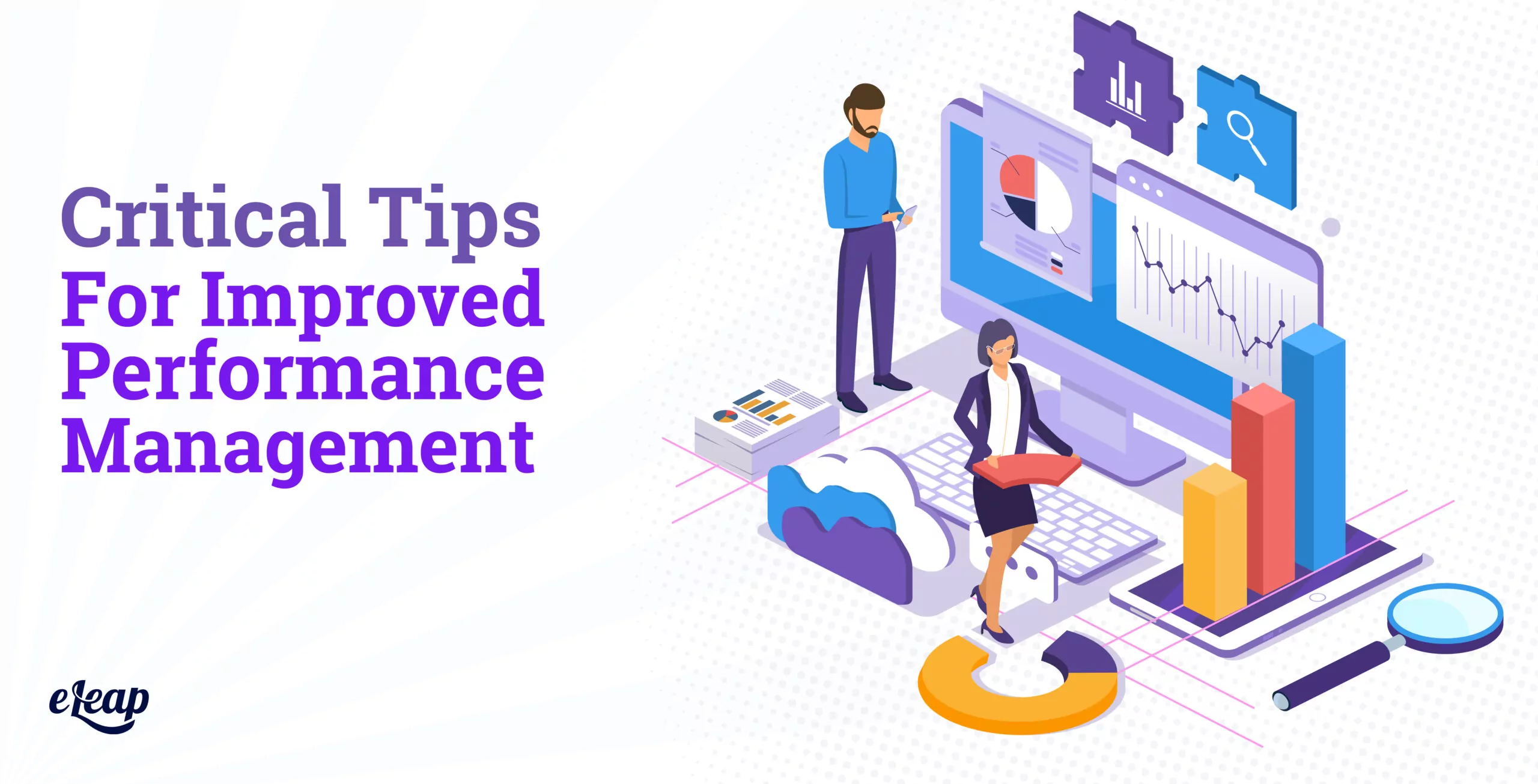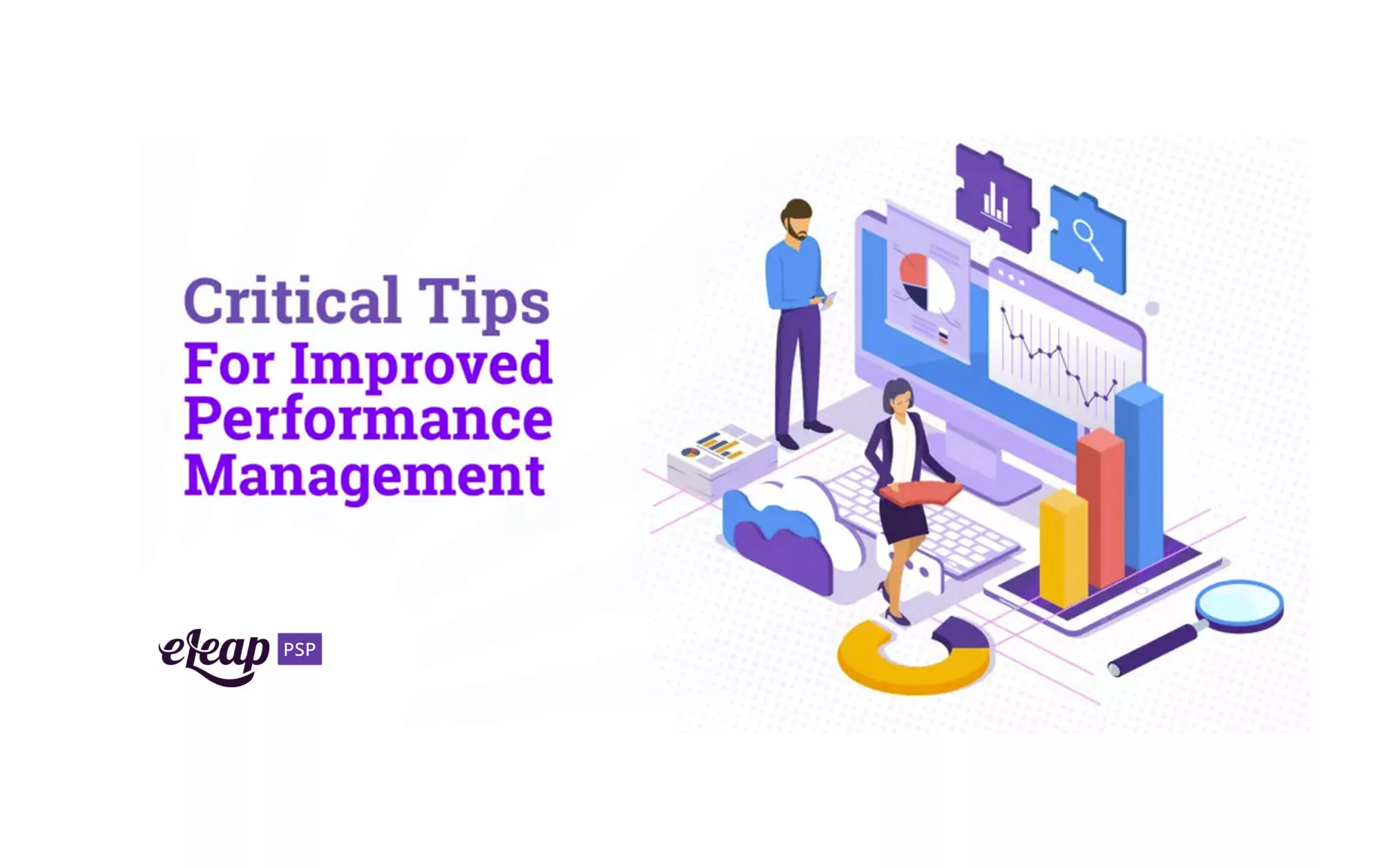Critical Tips for Improved Performance Management

No corporation is more successful than its least successful employee. No organization, regardless of industry, can grow and thrive if its employees do not aspire to meeting the objectives and goals of the organization. Ensuring that staff members are living up to their potential and their responsibilities is a critical consideration and one around which an entire industry has grown – performance management.

What Is Performance Management, Really?
Superficially, it’s easy to say that performance management is the art of ensuring that individual employees are performing to expectations. That’s the entire point, right? Actually, that impression is incorrect. If it were correct, then performance reviews would be all that was necessary to keep team members in line and moving forward, but that’s not the case, is it?
Sources from Forbes to Gallup have declared that “performance reviews are pointless and insulting” and “performance reviews do more harm than good.” So, if these so-called tried-and-true performance management tools are such dismal failures, what is it really all about?
Performance management, when you drill down to the heart of it, is about leading. It’s about guiding team members to their highest potential. Not with the carrot and stick method embodied in performance reviews, where an employee’s financial future hinges on their ability to kowtow to what upper management thinks they should be doing, but through actionable solutions that drive real results and improve the entire workplace.
Tips and Tricks to Deliver Improved Performance Management
To help ensure you’re able to build a strong, stable organizational environment in which employees are encouraged to do their best and to make genuine progress, follow these tips.
Break Out of the Old Mindset
One of the most critical tips for improved performance management is that you (the managers, executives, and decision-makers within the organization) must break out of that antiquated mindset that “we’ve always done it this way, so we’ll keep doing it.” The idea that “if it isn’t broken, don’t fix it” is not something that should be practiced. There are always better ways of doing things, and if you refuse to seek those out, perhaps the problem lies with management and not the team.
Create a Performance Improvement Strategy
Here’s the thing – even if annual performance reviews worked, which they usually don’t, the pace of modern business means that annual course corrections are folly. No matter your industry, the pace of business is hectic, and course corrections must be made promptly if they’re to have the anticipated effect.
To ensure that you can do that, you need to begin with an overarching performance improvement strategy. This is a 30,000-foot view of what needs to change within the organization to reach specific goals over time. It should include everything from industry best practices that need to be followed to tools that help you monitor and analyze team and employee performance over time.
Use Regular Check-Ins
In the past, employees sat down with management once per year and discussed their strengths and weaknesses, areas where they were performing well, and areas where their performance was lacking. The challenge with this is that feedback just once every 12 months isn’t going to have much of an impact on day-to-day activities. Even doing a review twice per year isn’t going to do much good. Instead, consider using regular check-ins with employees to ensure that they stay on track and are provided with the tools and techniques they need to improve their performance.
Check-ins provide a less formal environment, ensure that employees have access to timely, ongoing feedback and guidance, that questions can be answered as they arise, and more. They also show that your organization is invested in the success of your employees. Too often, annual reviews seem more organization-focused when the truth is that they should be employee-focused.
Learn to Be Specific
“You’re doing great.”
“There are areas where you need to improve.”
“You just need to do better.”
While the examples above create emotion, none of them provides anything concrete. What are we doing that’s great? What areas need improvement? Why? How? Without specificity, your performance management efforts are going to fall flat.
Anyone can say, “do better”, but without some concrete direction and guidance, improvement is impossible. Learn how to be specific. Give examples, not just of what needs to improve, but how to improve it. Often, team members are aware that there’s an issue, but they have no idea how to change things.
Commit to Conversations
Performance management isn’t something that can be done in a lecture-style format. Again, the carrot/stick paradigm needs to be abandoned. Instead, commit to having conversations with employees. Several different types can help when it comes to performance management, including:
- Goal planning helps an employee look forward to goals he or she will reach.
- Progress updates to support an employee in their journey.
- Upward feedback from the employee to you.
- Coaching in important areas, such as teamwork and meeting/exceeding expectations.
- Career growth discussions to help employees improve themselves and their future.
Invest in the Right Tools
Once upon a time, performance management was a process that relied almost completely on hardcopy records, paperwork, lists, and management’s judgment. Today that is no longer enough. This is particularly true if you intend to implement performance management check-ins. Instead, you need to invest in the right tools.
Performance management systems offer automation, customization, and the ability to track employee progress through a central dashboard. Performance management systems streamline the entire process for both employees and management while delivering critical benefits that encourage positive change and growth.
In Conclusion
Performance management is not what it once was. Annual performance reviews should be left in the past. To build a thriving organization today, you must adapt to changes and adopt new performance management techniques and solutions, up to and including an organization-wide change in mindset.